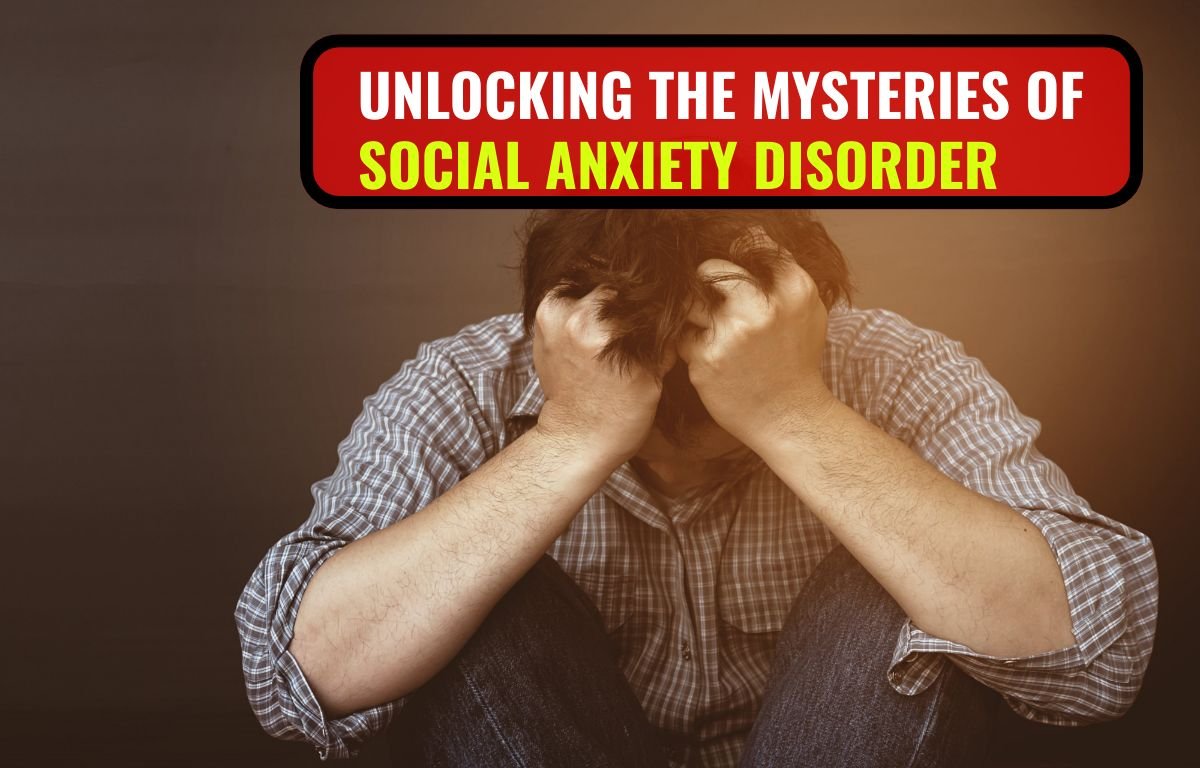Understanding Social Anxiety Disorder
In this comprehensive guide Unlocking the Mysteries of Social Anxiety Disorder, we will delve into the intricate world of Social Anxiety Disorder (SAD). Our aim is not only to provide valuable insights into this often debilitating condition but also to empower individuals seeking to understand, manage, or support those affected by SAD.
Defining Social Anxiety Disorder
Unlocking the Mysteries of Social Anxiety Disorder, commonly known as SAD, is a mental health condition characterized by intense fear or apprehension in social situations. Individuals with SAD often experience overwhelming anxiety when facing social interactions, leading to avoidance behavior.

Recognizing the Symptoms
1. Excessive Worry
Individuals with SAD frequently worry excessively about upcoming social events, fearing embarrassment or judgment by others. This heightened worry can lead to physical symptoms such as sweating, trembling, and palpitations.
2. Fear of Negative Evaluation
A core feature of SAD is the fear of being negatively evaluated by others. This fear can manifest as an intense dread of public speaking, difficulty making eye contact, or hesitancy in initiating conversations.
3. Avoidance Behavior
To cope with their anxiety, individuals with SAD often engage in avoidance behavior. This might involve skipping social gatherings, dodging public speaking engagements, or refraining from meeting new people.
Causes of Social Anxiety Disorder
The exact cause of SAD is multifaceted and can vary from person to person. However, some common factors contributing to the development of SAD include:
1. Genetic Predisposition
Research has shown that individuals with a family history of anxiety disorders are more likely to develop SAD themselves. This indicates a genetic element contributing to the condition.
2. Environmental Factors
Negative or traumatic social experiences during childhood or adolescence can contribute to the development of SAD. Bullying, rejection, or humiliation can leave lasting emotional scars.
3. Brain Chemistry
Imbalances in neurotransmitters, such as serotonin, can play a role in the onset of SAD. These imbalances affect mood regulation and can exacerbate anxiety.
Diagnosis and Treatment
1. Seeking Professional Help
If you suspect you or someone you know may have SAD, it’s crucial to seek professional help. A qualified mental health practitioner can conduct a thorough assessment to determine the diagnosis.
2. Psychotherapy
Cognitive-behavioral therapy (CBT) has shown remarkable success in treating SAD. CBT helps individuals identify and challenge negative thought patterns, gradually reducing anxiety in social situations.
3. Medication
In some cases, medication, such as selective serotonin reuptake inhibitors (SSRIs), may be prescribed to alleviate the symptoms of SAD. These medications can help restore chemical imbalances in the brain.
Overcoming Social Anxiety
SAD is a treatable condition, and with the right support and strategies, individuals can learn to manage their anxiety and regain confidence in social situations.
1. Gradual Exposure
Gradual exposure therapy involves facing feared social situations in a controlled and systematic way. This helps desensitize individuals to their triggers and reduces anxiety over time.
2. Mindfulness and Relaxation Techniques
Practicing mindfulness and relaxation exercises can significantly reduce the physical symptoms of anxiety. Techniques such as deep breathing, meditation, and progressive muscle relaxation are beneficial.
3. Support Networks
Building a strong support network can provide invaluable assistance to individuals with SAD. Friends and family can offer emotional support, encouragement, and understanding.
Conclusion
In this article, we’ve explored the intricate world of Social Anxiety Disorder (SAD), from its defining characteristics to its potential causes and treatment options. Understanding SAD is the first step toward managing and overcoming this challenging condition. Remember, seeking professional help and utilizing effective strategies can lead to a brighter, anxiety-free future.
By providing this comprehensive guide to Social Anxiety Disorder, we aim to offer valuable information that can assist individuals seeking to understand, manage, or support those affected by SAD.

1 thought on “Unlocking the Mysteries of Social Anxiety Disorder”